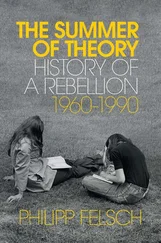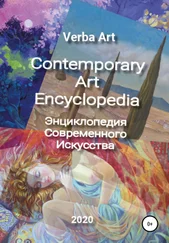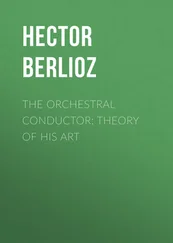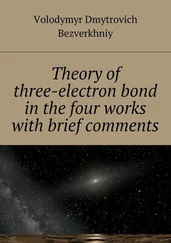On the day of the Embassador’s presentation to the Emperor … the Embassador and the gentlemen of the Embassy went before day light, as was announced to be proper, to the garden of the palace of Zhe‐hol. In the middle of the garden was a spacious and magnificent tent, supported by gilded, or painted and varnished pillars … Within the tent was placed a throne … It was not merely for the convenience of a great space to contain the concourse of persons meeting on this occasion, that a tent was preferred to a large apartment in the palace. The Tartar dynasty, in conforming in most instances to the customs of a much more numerous and more civilized, tho vanquished nation, retained still a predilection for its own ancient manners, in which occasionally, and on Tartar ground, it took a pleasure in indulging. […]
Soon after day‐light the sound of several instruments, and the confused voices of men at a distance, announced the Emperor’s approach. He soon appeared from behind a high and perpendicular mountain, skirted with trees, as if from a sacred grove, preceded by a number of persons busied in proclaiming aloud his virtues and power. He was seated in a sort of open chair, or triumphal car, borne by sixteen men; and was accompanied and followed by guards, officers of the household, high flag and umbrella bearers, and music … He was clad in plain dark silk, with a velvet bonnet … on the front of it was placed a large pearl, which was the only jewel or ornament he appeared to have about him. […]
His Excellency was habited in a richly embroidered suit of velvet, adorned with a diamond badge and star of the Order of the Bath. Over the suit he wore a long mantle of the same order, sufficiently ample to cover the limbs of the wearer. An attention to Chinese ideas and manners, rendered the choice of dress of some importance, and accounts for this mention of it. The particular regard, in every instance, paid by that nation to exterior appearances, affects even the system of their apparel, which is calculated to inspire gravity and reserve. For this purpose, they use forms the most distant from those which discover the naked figure. Indeed, among the most savage people, few or none are found to whom an interior sentiment … does not suggest the propriety of covering some portion of the human frame. This sentiment, to which is given the name of decency, as pointing out what is becoming to do, increases generally with the progress of civilization and refinement; and is carried no where perhaps so far as among the Chinese, who hide, for the most part, in their loose and flowing robes, the bulk and form of their limbs. In this respect, there is scarcely any difference between the dresses of the two sexes. Even the imitation by art of the human figure, either naked or covered only with such vestments as follow and display the contour of the body, is offensive to Chinese delicacy; a delicacy which has retarded the progress of painting and sculpture, as far at least as relates to such subjects, in that country. […]
The next object of civility immediately from the Emperor, was an invitation to his Excellency and his suite to see the gardens or pleasure grounds of Zhe‐hol. […] They rode through a verdant valley in which several trees, particularly willows of an uncommonly large girth, were interspersed, and between which the grass was suffered to attain its most luxuriant height, with little interruption from cattle or the mower. Arriving at the shores of an extensive lake of an irregular form, they sailed upon it till the yachts in which they had embarked, were interrupted by a bridge thrown over the lake in the narrowest part … The surface of the water was partly covered with lien‐wha , or species of lily … The party stopped at a number of small palaces near the water’s edge, there being no one very considerable edifice. There were other buildings erected on the pinnacles of the highest hills, and some buried in the dark recesses of the deepest vallies. They differed in construction and ornament from each other, almost every one having something in the plan of it, analogous to the situation and surrounding objects; but within each was generally a public hall, having in the midst a throne and a few side rooms: the whole furnished with works of art from Europe, and rare or curious productions of nature found in Tartary … The best works of art by natives of the country were carvings in wood descriptive of natural objects grouped together with taste, and executed with truth and delicacy. Some of the walls were covered with paintings, representing the pleasures of the chase in Tartary. In these the Emperor is always seen at full gallop, shooting wild beasts with arrows. These paintings cannot stand the test of European criticism. The trees, the birds, some parts of the landscape, and even the animals, were drawn with accuracy; but they failed in the human figure, with which the spectator being better acquainted, can more easily perceive where the imitation of it is defective. The proportions, the perspective were not preserved; and the Chinese, tho they succeed in a correct and sometimes lively delineation of individual objects, cannot properly be said, in the present state of their arts, to be equal to the design and composition of a picture. […]
The gardens were enlivened by the movements, as well as sounds, of different kinds of herbivorous animals, both quadrupeds and birds; but no menagerie of wild beasts was perceived. Some monstrous varieties of gold and silver fishes were seen playing in ponds of pellucid water, upon a bottom studded with pebbles of agate, jasper, and other precious stones. Throughout these grounds, they met no gravel walks; no trees planted in belts, nor collected in clumps. Every thing seemed to be avoided which betrayed a regularity of design. Nothing was observed to be directed, unless for very short distances, by straight lines, or to turn at right angles. Natural objects seemed scattered round by accident, in such a manner as to render their position pleasing; while many of the works of human labour, tho answering every purpose of convenience, were made to appear the produce of rustic hands, without the assistance of a tool. Some of the elegancies and beauties which are described as taking place in Chinese gardens, were not perceived by the present visitors; but the gardens of Yuen‐min‐yuen near Pekin, from whence those descriptions are chiefly taken, are supposed to be more complete than those of Zhe‐hol; and it were presumptuous to assert that what is omitted in the one, has been falsely attributed to the other.
* * *
In the neighbourhood of Pekin, the gardens and pleasure grounds of Yuen‐min‐yuen occupy a considerable tract of ground, of which the circuit was, according to the observation of Mr Barrow, at least twelve miles. That gentleman, who saw more of it than any other person of the Embassy, thought it ‘a delightful place. The grand and agreeable parts of nature were separated, connected and arranged in so judicious a manner as to compose one whole, in which there was no inconsistency or unmeaning jumble of objects; but such an order and proportion as generally prevail in scenes entirely natural. No round or oval, square or oblong lawns, with the grass shorn off close to the roots, were to be found any where in those grounds. The Chinese are particularly expert in magnifying the real dimensions of a piece of land, by a proper disposition of the objects intended to embellish its surface; for this purpose, tall and luxuriant trees of the deepest green were planted in the fore ground, from whence the view was to be taken; whilst those in the distance gradually diminished in size and depth of colouring; and in general the ground was terminated by broken and irregular clumps of trees, whose foliage varied as well by the different species of trees in the group, as by the different times of the year in which they were in vigour; and oftentimes the vegetation was apparently old and stunted, making with difficulty its way through the clefts of rocks, either originally found or designedly collected upon the spot. […]
Читать дальше












